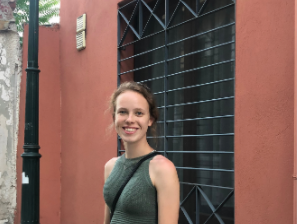Students share their community New Year’s resolutions
On Jan. 1, people around the world wake up to a new year. Some spend the previous night at a rave (less than 5 percent), others fall asleep before midnight arrives (22 percent), but most are tucked away at home to share a bottle of champagne with their loved ones (75 percent). Many of these people recognize Jan. 1 to represent not only a new year but also the time to make the infamous New Year’s resolutions.
The ancient Babylonians are credited with the creation of New Year’s resolutions over 4,000 years ago. Upon celebrating the holiday—which for them would have been in the middle of March to mark the planting of crops—Babylonians would make promises to one another and to their gods for the upcoming season. Hundreds of years later, Julius Caesar established Jan. 1 as the beginning of the calendar year. In January, a month named after the Roman god Janus who was thought to review the past year and look into the future, the Romans made sacrifices and promises for the new year.
Today, resolutions are much more secular in nature, with people making promises to themselves rather than gods. A 2013 Google Maps project, Zeitgeist, analyzed people’s resolutions from different countries and areas of the world. The final map found common resolution themes among groups of people. Australians and Japanese were seeking love, while in India goals were targeted toward career development. In Russia, education was prioritized, whereas Americans and Egyptians were found to predominately make health-related resolutions.
While recognized as noble and respectable goals, exercising four times a week, going to bed earlier, saving money and eating healthier have proven to be unattainable when posed as New Year’s resolutions.
Amy Cuddy, a social psychologist best known for her work on “power posing” outlined four flaws resolutions have: they deal in absolutes; they are framed by negativity; they are focused on the outcome and not the process (a very demoralizing method, according to Cuddy) and they are reliant on forces beyond an individual’s control. Resolutions are so unsuccessful and inefficient in fact, that only eight percent of people achieve them.
Accountability, or the buddy system, is the ticket to success. The American Society of Training and Development determined a 65 percent chance of completing a goal if there is someone to whom the goal-setter is accountable.
This year, Case Western Reserve University students were challenged to think communally, dedicating their resolutions to one another and the betterment of their community. The students were asked to share their New Year’s resolutions for the improvement of their community and for America.
Below are their resolutions:
“I’d like for the Case community to develop authentic relationships with other Cleveland residents and help to dismantle the bubble surrounding University Circle and CWRU from all fronts, from activism to trips on the Healthline to tutoring in local schools,” said Gillian Prater-Lee, a third-year student double-majoring in political science and mathematics. “I see how disconnected we are from the surrounding neighborhoods, and how much CWRU students could learn about social justice and the reality of our community if they left campus every once in a while.”
Pratter-Lee also “see[s] that many residents of the United States are misrepresented by [the] current government.” Because of this disparity she “hope[s] America learns to stand up for oppressed people here and abroad and fiercely advocate for the representation of such values in our political system.”
Alyssa Usab, a first-year student studying biomedical engineering, similarly recognizes CWRU students to be secluded from surrounding neighborhoods. “Since starting here this fall, I’ve realized that the Case community feels like a bubble within Cleveland,” she said. “I hope that we can break that barrier and become more aware of our surroundings [so we can] find ways to fight for change in the community we live in.” She encourages all CWRU students to become more politically aware and involved in the area.
On a national level, Usab desires full realization of the perils of climate change. “Right now, even though it’s talked about daily, it is still viewed as something whose consequences are far off into the future, but they are not,” she said. “If we don’t make changes to the way we are living extremely fast, those consequences will catch up with us and the future generations even faster,” she added.
Maria Luisa Bates Domenech, a first-year student double majoring in political science and economics, would like to see “increased exposure about how poorly the black community is being treated by police officers, and to begin implement[ing] politics that fight against it.” She added, “I think Case has an opportunity to be involved because we have a lot of influence in the community.”
As the next presidential election season quickly approaches, Domenech hopes diversity in presidential nominees increases and that citizens are more involved and informed during the campaign.
Sai Supriya Vuda, a fourth-year chemical biology major, wants “Case and our community to come together during these hard times; government shutdown, low morale, high levels of hate crimes, and work to counteract some of the hateful rhetoric that has been rampant this past semester.” She optimistically thinks “this is absolutely tangible in that we can … send reminders of acceptance and hold student meetings to help each other.” Vuda says this as a woman of color and immigrant, but also recognizes that there are those who are even “more prone to hatred,” specifically citing the LGBTQ community and people of low-income status.
Vuda hopes America and the CWRU community can find common ground.
“We don’t have to be passive,” she said. “We can create our own initiatives to come closer together—we don’t need permission or validation. I hope we come together as a university and preach acceptance for everyone.”

Jordan Reif is a fourth-year student studying political science with minors in biology and chemistry. When she’s not in one of her three PE classes this...

